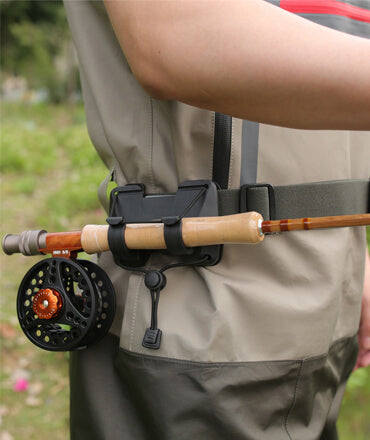Fly Line: Understanding Weight, Color, and Maintenance for Optimal Fly Fishing Performance
When I first ventured into fly fishing, understanding the significance of fly line and backing was crucial to my success on the water. Choosing the right fly fishing line, along with appropriate backing, is essential for optimal performance and can greatly enhance your fishing experience. The weight, color, and maintenance of your fly fishing backing line can make a noticeable difference in how effectively you catch fish.

I found that different fly fishing situations call for various backing line weights, which can impact my casting distance and line management. Additionally, the color of the backing can either help conceal it in the water or provide visibility when needed. Regular maintenance of my fly fishing backing line has proven to be just as important, as it ensures durability and reliability during those critical moments of a catch.
I have learned that investing time in understanding these elements leads to a more enjoyable and successful fly fishing journey. Whether you're a beginner or an experienced angler, mastering the intricacies of fly line and backing will undoubtedly elevate your fishing game.
Fly Line Basics
Understanding fly lines is crucial for effective fly fishing. The right choice in type and characteristics can significantly enhance your performance on the water.
Types of Fly Lines
There are several types of fly lines, each designed for specific fishing conditions and techniques. The main categories include:
- Floating Lines: Ideal for surface presentations. These lines provide excellent visibility and ease of retrieval.
- Sinking Lines: Best for deep-water fishing. They assist in reaching fish that are below the surface.
- Intermediate Lines: These float just below the surface, making them versatile for various techniques.
Each type comes in different tapers (the shape of the line), affecting presentation and casting. A weight-forward taper provides improved distance, while a double taper enables delicate presentations.
Selecting a Fly Line
Choosing the right fly line involves considering several specific factors:
- Weight: The weight should match your rod. Lines are labeled by weight, ranging from 1 to 12+, allowing for appropriate pairing.
- Quality: Higher-quality lines feature better materials, ensuring durability and enhanced performance.
- Diameter: This influences casting characteristics and wind resistance. Thinner lines can cut through wind more effectively.
I prioritize versatility when selecting lines to adapt to changing conditions. Assessing these elements willGuide my decision and help me maximize my fishing success.
Fly Line Backing Fundamentals
Understanding fly line backing is essential for maximizing performance while fly fishing. Backing serves as an additional line, providing extra length and preventing the main line from running out.
Importance of Backing Line
Backing line plays a crucial role in fly fishing. It provides additional capacity on the reel, allowing for more line to be stored, which is particularly important when targeting species that make long runs.
The strength and durability of the backing are vital. A good backing can handle the weight and pressure exerted by larger fish. Typical backing lengths can range up to 300 yards, depending on the reel type. I prefer chartreuse backing, as its visibility allows for easy monitoring during a fight.
Choosing Backing Line Weight
Selecting the appropriate backing line weight is critical for balancing the setup. The backing weight should match the fly line’s weight to ensure compatibility.
Common weights include 20, 30, and 50-pound tests. A heavier backing line offers better performance and durability, especially when landing larger fish. I usually opt for 30-pound backing on most setups as it provides a good balance between strength and manageability.
When selecting backing line, I also consider the fishing environment and target species to ensure my setup is reliable and effective.
Advanced Considerations for Backing Lines

When considering backing lines, two key aspects stand out: the color of the line and the importance of maintenance. Both play a significant role in my fly fishing performance and overall experience on the water.
Backing Line Colors
Choosing the right backing line color is crucial for visibility and functionality. I often opt for orange or chartreuse lines. Both colors are highly visible against water, making it easier to spot when a fish runs.
| Color | Visibility | Common Use Cases |
|---|---|---|
| Orange | High | Freshwater fishing |
| Chartreuse | Very High | Saltwater fishing |
Having a bright color can also help others around me see the line, enhancing safety and reducing the risk of tangles. The durability of the color can fade over time, so I pay attention to the hue throughout the season.
Maintaining Your Backing Line
Regular maintenance is essential to prolong the life of my backing line. I inspect it for frays or damage before each trip. If I notice any defects, I replace that section to prevent failures during a catch.
Washing the line with mild soap and water periodically helps remove dirt and grime. Additionally, I store the backing line properly by keeping it dry and protected from the sun to prevent UV damage. This care can significantly enhance the line's durability and performance in the long run.











